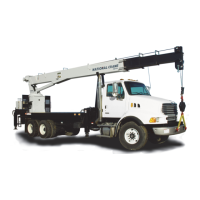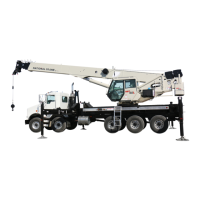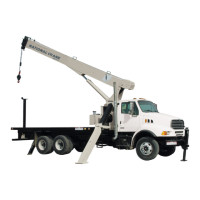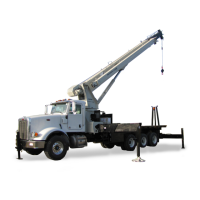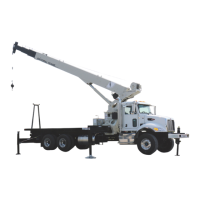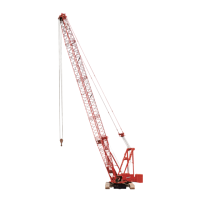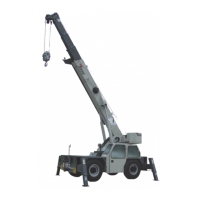RATED CAPACITY LIMITER NTC55 OPERATOR MANUAL
7-12 Published 9-26-2018 Control # 646-02
OPERATIONAL LIMITS
Operational limits are set by the operator to limit crane
operation to a defined area. The operational limit icons are
displayed in the warning cluster on the RCL Operating Mode
screen. These icons will flash and a buzzer will sound when
the operator violates the limits.
To set operational limits select the LIMIT function key on the
RCL Operating Mode screen, the RCL Limits Menu screen
will appear.
RCL Limits Menu
Select the desired operational limit 1 through 6, use the
arrow key to scroll back and forth to select the correct
operational limit.
Operational limit selections on the display are as follows:
1. Set a slew angle limit.
2. Set a WADS limit.
3. Set a boom angle limit.
4. Set a tip height limit.
5. Set a radius limit.
6. Delete all limits
Slew Angle Limit
RCL Limit #1
Rotate the crane superstructure to the desired position (the
number will appear on the display screen) then:
- Select the SET function key (1 or 3, Figure 7-2) to
store the current slew angle.
- Select DEL function key (2 or 4, Figure 7-2) to
remove the current setting.
- The RCL #1 screen is updated in real time.
- ESC to return to previous screen when finished.
Use the function key with a for counter clockwise
settings and the function key with a for clockwise slew
settings.
The current slew angle is shown in the top right corner
(xxx.x°) of the Limit #1 screen. The left and right slew angle
limits appear below the current slew angle.
WADS Limit
RCL Limit #2
The RCL Limit #2 screen will allow the operator to create
virtual “walls” of operation.
Rotate the crane superstructure to the desired position (the
radius and slew angle will appear on the display screen)
then:
- Select the SET function key to set the current boom
nose position.
- Select DEL function key to remove the current
settings.
- Select OK to store each position after input.
There can be up to four set points which form 3 virtual walls.
The points are taken from the rope fall length and highest
point of the boom nose.
There needs to be at least two points for a virtual wall. Points
are stored as distance in feet (RADIUS) from the center of
rotation and angle (SLEW ANGLE) from the center line of
truck with the boom in the boom rest, see Figure 7-8.
8807-29
SETPOINTS
Current (Actual) Slew Angle

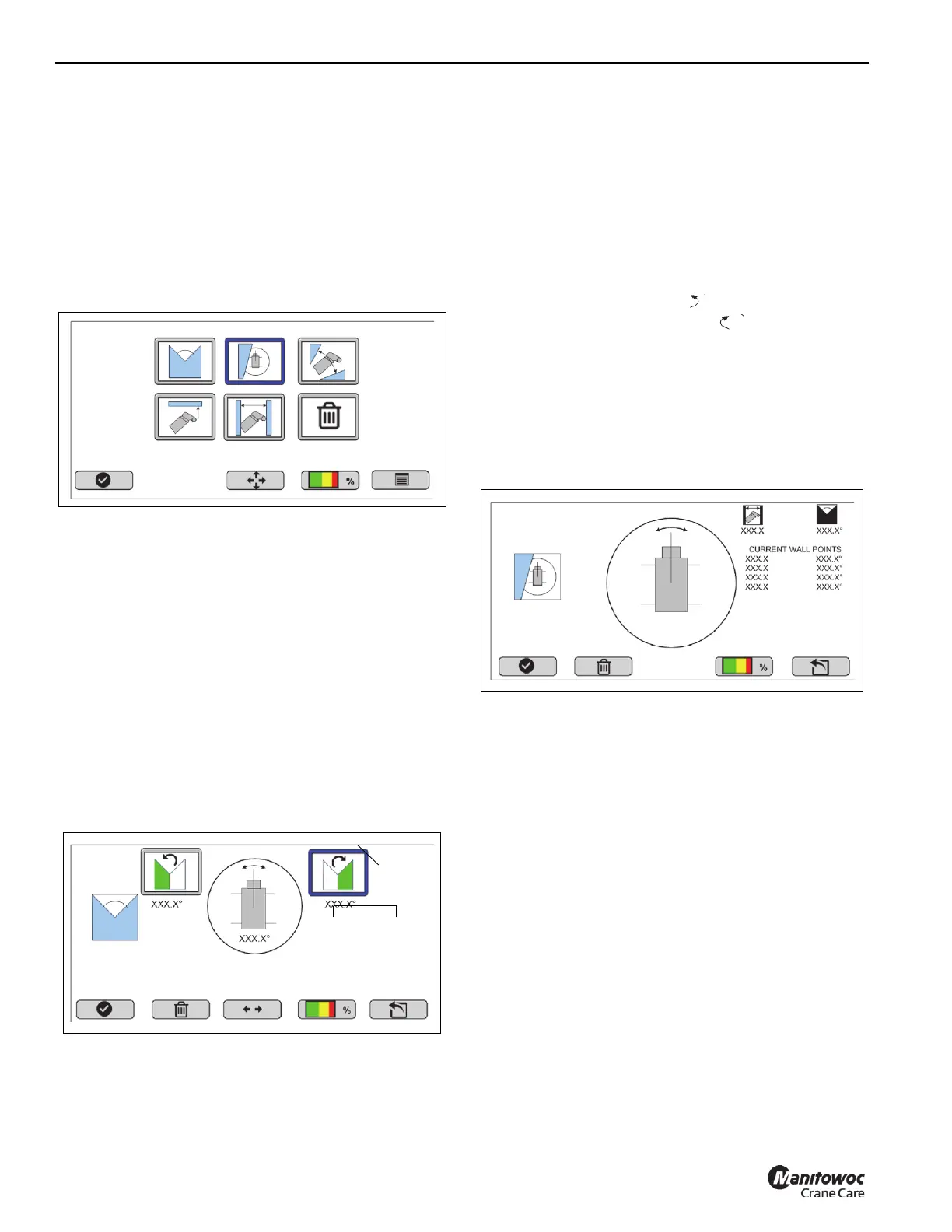